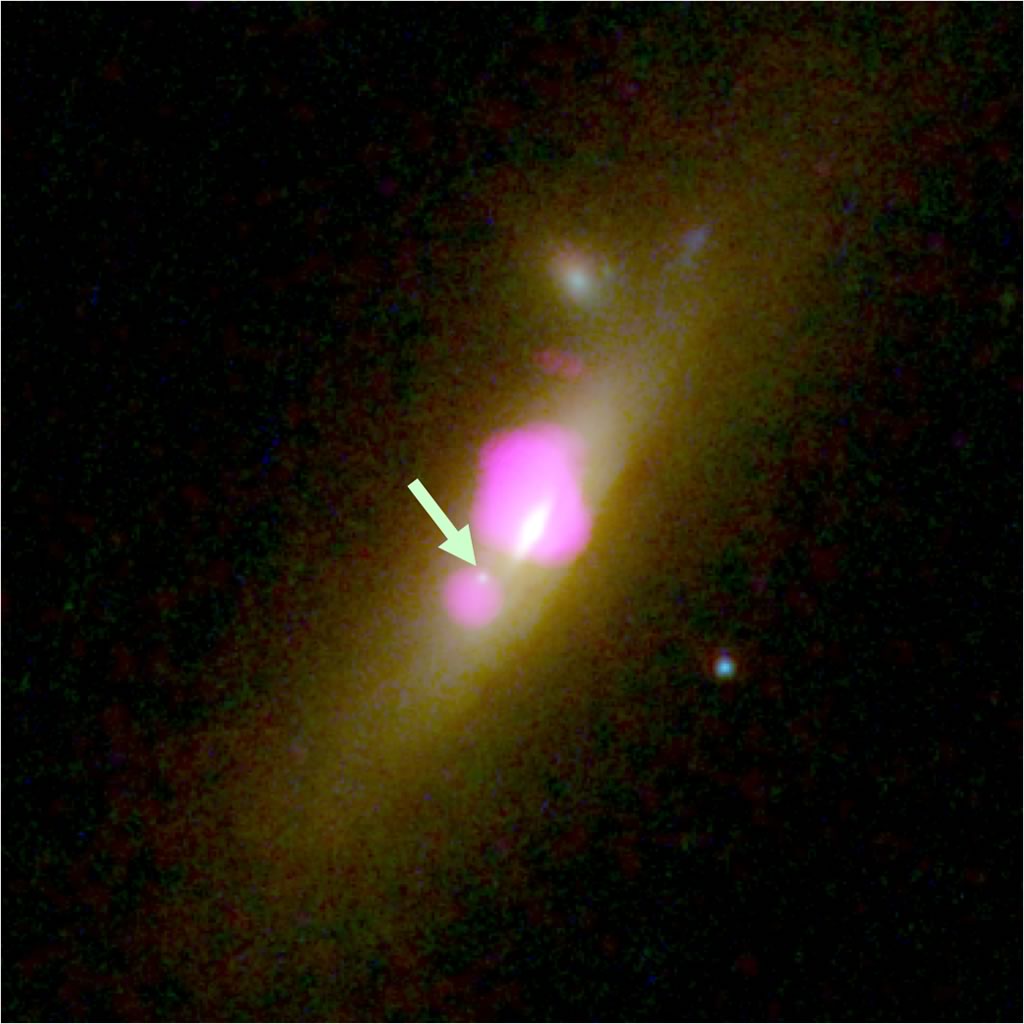A 'Crash' Diet: Merger May Have Slimmed Down Monster Black Hole

A surprisingly light supermassive black hole may have shed pounds thanks to a galaxy-merger crash diet, astronomers say.
The unusual black hole, one of two found in the midst of a merger between distant galaxies about 1 billion light-years from Earth, has far fewer stars around it than expected, suggesting that powerful gravitational forces have stripped away the excess weight.
"One black hole is starved, and has 500 times fewer stars associated with it than the other black hole," study leader Julie Comerford, an assistant professor at the University of Colorado Boulder, said in a statement. Comerford presented the results at the 227th annual meeting of the American Astronomical Society yesterday (Jan. 5) in Kissimmee, Florida. "The question is why there's such a discrepancy." [Images: Black Holes of the Universe]
At the heart of most if not all galaxies, including the Milky Way, lies a supermassive black hole, a behemoth that weighs millions or billions of times more than the sun. When galaxies collide, the black holes at their centers interact with surrounding stars, gas and dust, as well as with one another.
Most supermassive black holes pack on the pounds with a spherical collection of stars surrounding them. However, Comerford and her colleagues found something strange going on with the galaxy SDSS J1126+2944, which was created by the merger of two smaller galaxies and harbors two black holes. Observations by NASA's Hubble Space Telescope and Chandra X-Ray Observatory showed that one black hole contains the anticipated number of stars, while the other is significantly lighter.
It's possible that the extra weight was shed during the merger, when extreme gravitational forces stripped surrounding stars away, study team members said.

However, another possibility is that the lighter black hole isn't actually supermassive after all. Instead, it could be a rarer medium-size black hole, weighing in between 100 and 1 million times as much as the sun. Intermediate black holes are predicted to lie at the center of smaller dwarf galaxies, and are thought to grow eventually into the more familiar supermassive sort. These smaller black holes would be surrounded by fewer stars than their monstrous elders, which could account for the difference.
Get the Space.com Newsletter
Breaking space news, the latest updates on rocket launches, skywatching events and more!
"Theory predicts that intermediate black holes should exist, but they are difficult to pinpoint because we don't know exactly where to look," study co-author Scott Barrows, also of the University of Colorado Boulder, said in the same statement. "This unusual galaxy may provide a rare glimpse of one of these intermediate-mass black holes."
The research was published recently in the Astrophysical Journal.
Follow Nola Taylor Redd on Twitter @NolaTRedd or Google+. Follow us @Spacedotcom, Facebook or Google+. Originally published on Space.com.
Join our Space Forums to keep talking space on the latest missions, night sky and more! And if you have a news tip, correction or comment, let us know at: community@space.com.

Nola Taylor Tillman is a contributing writer for Space.com. She loves all things space and astronomy-related, and always wants to learn more. She has a Bachelor's degree in English and Astrophysics from Agnes Scott College and served as an intern at Sky & Telescope magazine. She loves to speak to groups on astronomy-related subjects. She lives with her husband in Atlanta, Georgia. Follow her on Bluesky at @astrowriter.social.bluesky
